Fume-free Public Transport Interchange - A Dream Come True in Kwun Tong With Bladeless Air Induction Units
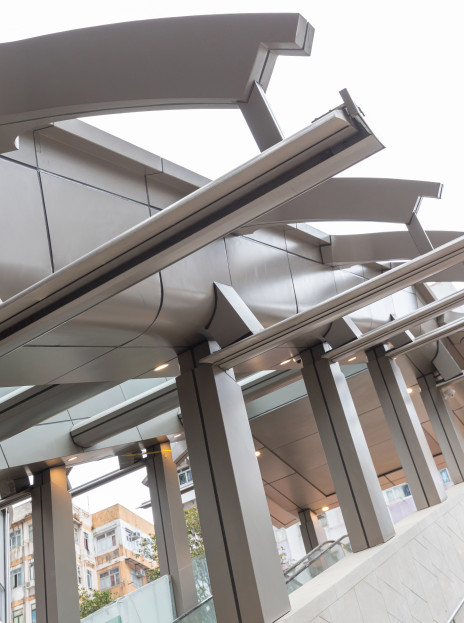 Comprising a total of 10 AIUs, the ventilation device is able to optimise the performance of the innovation in relaying fresh air to the semi-confined transport interchange area.
Comprising a total of 10 AIUs, the ventilation device is able to optimise the performance of the innovation in relaying fresh air to the semi-confined transport interchange area.
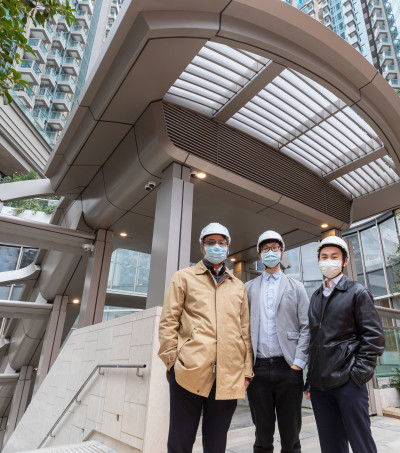 (From left) Adopting innovation and technology, the collaborative effort from Gary, Tenny and Jimmy and their respective sectors has made the redeveloped Kwun Tong a more liveable area.
(From left) Adopting innovation and technology, the collaborative effort from Gary, Tenny and Jimmy and their respective sectors has made the redeveloped Kwun Tong a more liveable area.
On scorching summer days, semi-confined public transport interchanges (PTI) in Hong Kong are usually hot and stuffy, where lining up for buses and minibuses has become an unpleasant experience. What’s more, the environmental conditions may favour the spread of viruses during the pandemic. In view of this, the URA has introduced an award-winning local invention – the bladeless Air Induction Units (AIUs) - into the soon-to-open public transport interchange at Yue Man Square, Kwun Tong. Capable of inducing up to 10 times of air movement as compared with conventional mechanical fan systems, the AIU can improve airflow and reduce the amount of exhaust fumes in the transport interchange area.
Built on a sloping site in Kwun Tong, the public transport interchange at Yue Man Square has split levels, the lower level of which houses the minibus terminal and is sunken below ground, making entry of fresh air difficult. In order to solve the problem, the URA worked in collaboration with the joint venture developer and engineering consultant to come up with an innovative bladeless ventilation design comprising AIUs for inducing airflow to the transport interchange.
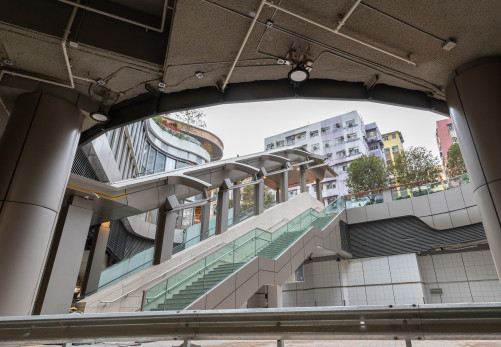 Built on a sloping site in Kwun Tong, the public transport interchange at Yue Man Square has split levels, making entry of fresh air to the lower floor a very challenging task.
Built on a sloping site in Kwun Tong, the public transport interchange at Yue Man Square has split levels, making entry of fresh air to the lower floor a very challenging task.
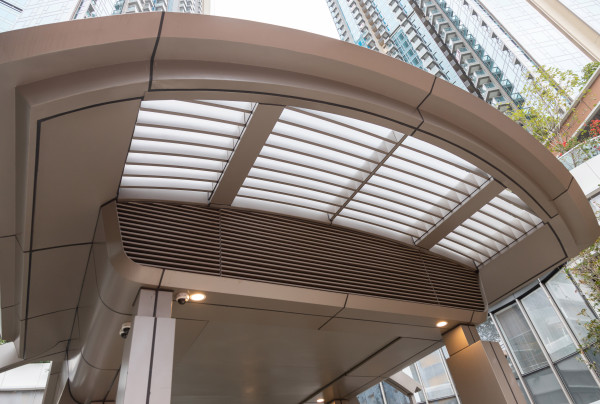 Ventilation fans are hidden inside the escalator canopy.
Ventilation fans are hidden inside the escalator canopy.
The AIU has the shape of an aircraft wing and operates under the principle of aerodynamics to steer the direction of airflow. When connected to a ventilation system, the AIU generates a small jet of air, which in turn entrains a large volume of surrounding air. Compared to conventional mechanical fans, the AIU can generate 10 times the airflow while reducing up to 65% of energy consumption, making it a more comfortable, energy-saving and noise-reduced option.
To further increase airflow, the enhanced design of the air ventilation system at Yue Man Square public transport interchange comprises a total of 10 AIUs, which are arranged in two rows above the escalator connecting Mut Wah Street on the ground-level and the sunken level of minibus terminal. A continuous flow of fresh air can then be relayed by the rows of AIU blades from Mut Wah Street down to the semi-confined minibus terminal area. To boost the ventilation performance, the team has also installed two additional AIUs on the ground level of Mut Wah Street. The whole system effectively reduces the temperatures inside PTI by 1.5 to 2 degrees Celsius.
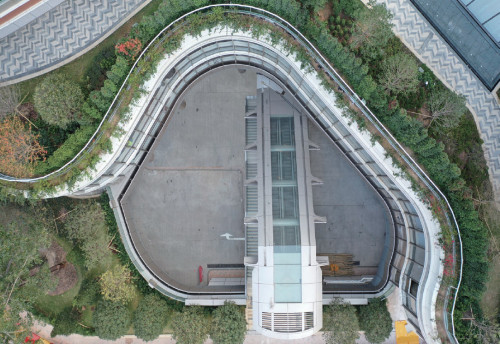 Having the shape of aircraft wings above the escalator, the AIUs are designed to integrate with the surrounding environment.
Having the shape of aircraft wings above the escalator, the AIUs are designed to integrate with the surrounding environment.
